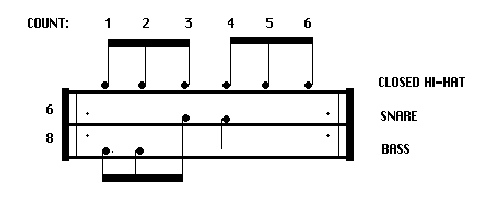


In considering the clave as this basis of cultural understanding, relation, and exchange, this speaks to the transnational influence and interconnectedness of various communities. Ultimately, this embodies the diasporic transnational exchange. The rhythms and vibrations are universalized in that they demonstrate a shared cultural experience and knowledge of these roots. In this sense, it is the “heartbeat” that underlies the essence of these genres. The clave is the foundation of reggae, reggaeton, and dancehall. In addition to this, the emphasis and role of the drum within the rhythmic patterns speaks further to these diasporic roots. For instance, influences of the African “bomba” rhythm are reflected in the clave. The historical roots of the clave are linked to transnational musical exchanges within the African diaspora. The clave pattern (or hambone, as it is known in the United States) is used in North American popular music as a rhythmic motif or simply a form of rhythmic decoration. The clave pattern is also found in the African diaspora music of Haitian Vodou drumming, Afro- Brazilian music, African-American music, Louisiana Voodoo drumming, and Afro- Uruguayan music ( candombe). In ethnomusicology, clave is also known as a key pattern, guide pattern, phrasing referent, timeline, or asymmetrical timeline. The clave pattern originated in sub-Saharan African music traditions, where it serves essentially the same function as it does in Cuba. The five- stroke clave pattern represents the structural core of many Afro-Cuban rhythms.

It is present in a variety of genres such as Abakuá music, rumba, conga, son, mambo, salsa, songo, timba and Afro-Cuban jazz. In Spanish, clave literally means key, clef, code, or keystone. The clave ( / ˈ k l ɑː v eɪ, k l eɪ v/ Spanish: ) is a rhythmic pattern used as a tool for temporal organization in Afro-Cuban music.



 0 kommentar(er)
0 kommentar(er)
